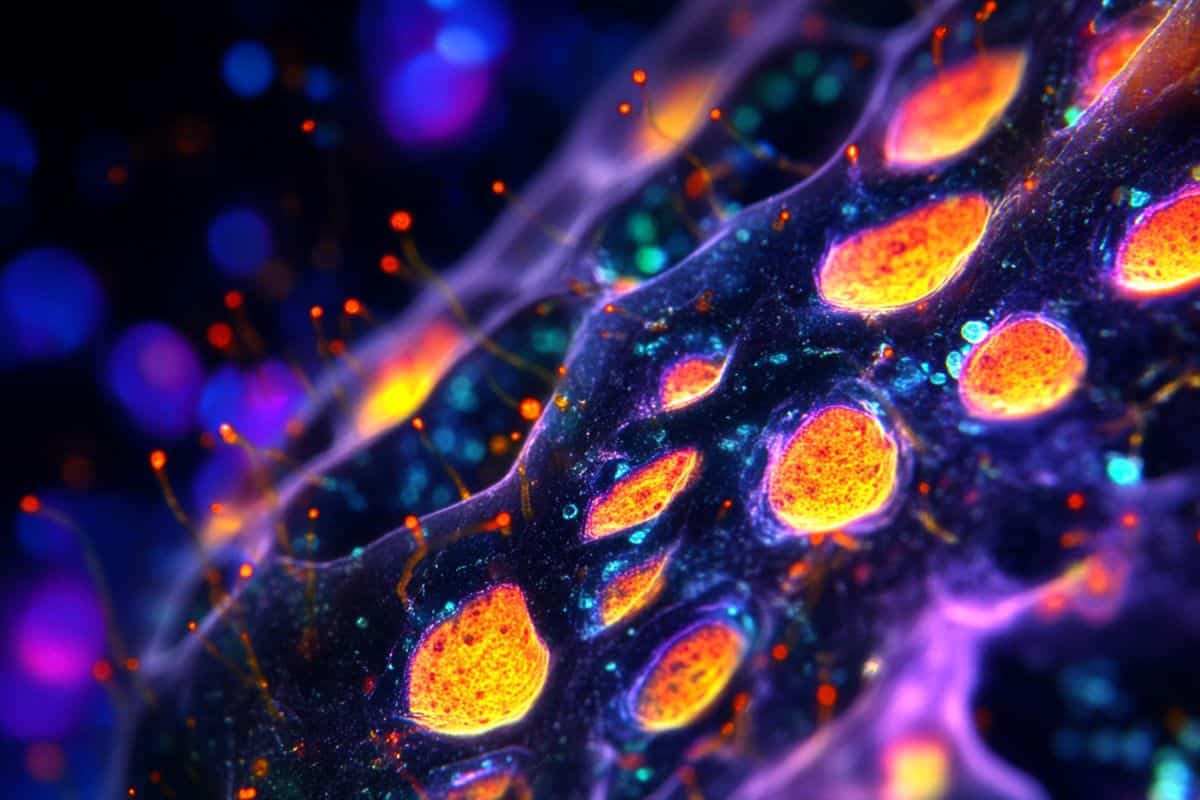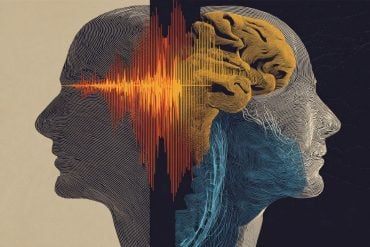Summary: Scientists have discovered that neural stem cells (NSCs) receive constant feedback from their daughter cells, influencing whether they remain dormant or activate to form new neurons and glia. This parent-child relationship helps regulate brain regeneration and repair.
The study also reveals that calcium signaling plays a key role in how NSCs decode multiple signals from their environment. If NSCs produce only a few daughter cells, they activate; if they produce many, they stay dormant.
These findings challenge previous assumptions that NSCs function independently and open new avenues for treating neurodevelopmental disorders. Future research will explore how these processes change in aging and disease.
Key Facts:
- Neural Stem Cell Feedback: NSCs stay dormant or activate based on signals from their own daughter cells.
- Calcium’s Role: Calcium signaling enables NSCs to integrate and decode multiple brain signals.
- Therapeutic Potential: Understanding NSC activation could lead to treatments for neurological disorders and brain injury repair.
Source: University of Ottawa
A University of Ottawa neuroscientist has led a Canadian research team to reveal important new insights into the activation dynamics of neural stem cells (NSCs). These are the stem cells that build our central nervous systems and the self-renewing.
The collaborative team led by the University of Ottawa’s Dr. Armen Saghatelyan aimed to shed light on how neural stem cells integrate a multitude of signals from different cell types in the brain – and how they decode these signals.
These are big questions because how NSCs react to signals in their cellular environment controls whether they remain in their dormant, non-dividing state known as “quiescence” or if they get activated to grow and divide, generating new neurons and glia in the process.

The reported findings, published today in Cell Stem Cell, will certainly be of deep interest to scientists studying a range of adult neurological diseases and aging. In the neural landscape, rousing NSCs from dormancy, where they conserve resources and energy, is key for neural regeneration and brain injury repair.
“These data make it possible to understand better how NSCs can be activated to generate more neurons and glia in order to counteract different neurological disorders and aging. We are currently studying NSCs’ responses for some of these conditions,” says Dr. Saghatelyan, Canada Research Chair in Postnatal Neurogenesis and the new publication’s senior author. (Neurogenesis is the process by which new neurons are formed in the brain.)
Cellular “parent-child” relationship
One avenue of new insight focuses on how stem cells wrap around progeny called “daughter” cells – genetically identical cells created after a parent cell divides.
The team discovered that neural stem cells are in fact receiving constant feedback from their chatty daughter cells. Dr. Saghatelyan likens this to a “parent-child relationship” in which the parent is closely attuned to their child’s feedback.
“Many parents will relate to this since parents like to receive news, or feedback, from their children. Based on this feedback, the parents will either stay reassured that everything is going well or take an action,” he says, comparing this dynamic to the cellular state of quiescence or activation.
Revealing this hidden mechanism is a major finding because it provides an entirely new framework for how to understand this cellular relationship in the human brain.
“Until now it was thought that NSCs only generate progeny and that there is no interaction between them,” Dr. Saghatelyan says.
“But our work challenged this notion and showed that there is tight structuro-functional interaction between NSCs and their progeny – and that the number of progeny or the efficiency of progeny-NSC interaction determines whether neural stem cells stay quiescent or get activated to generate neurons and glia.”
In a nutshell, the research team found that a low number of daughter cells leads to activation of neural stem cells, while a large number of offspring keeps them in their typical state of quiescence in the adult brain.
Further, the new study advances our understanding of how NSCs integrate and decode a multitude of signals in space and time. Dr. Saghatelyan says the research unveils for the first time that “calcium signaling in NSCs allows for integration and decoding of all these signals.”
Informing future therapeutics
These new windows of understanding into how NSCs decode signals and how their activation is triggered offers strong potential for informing any future treatments for human neurodevelopmental disorders.
Indeed, advancing this potential is the next step for the research collaborators as they explore questions suggested by this work.
“We are now exploring how interactions of NSCs with different cell types in their micro-environment is affected in different physiological and pathological conditions as well as in healthy aging,” says Dr. Saghatelyan, whose Faculty of Medicine research lab focuses on generating new knowledge to help boost neuronal regeneration.
The study – which started at Université Laval where Dr. Saghatelyan’s lab was located until 2022 – was conducted at the uOttawa Faculty of Medicine, where a cutting-edge two-photon imaging system made it possible to assess the functional activity of neural stem cells.
Single cell sequencing and spatial transcriptomics were performed by collaborators at University of Toronto and the University of British Columbia. Machine learning collaboration was performed at Université Laval.
Funding: The work was supported by the Canadian Institutes of Health Research (CIHR), the Canada Foundation for Innovation (CFI), and investments from the Canada Research Chair program.
About this genetics and neuroregeneration research news
Author: Paul Logothetis
Source: University of Ottawa
Contact: Paul Logothetis – University of Ottawa
Image: The image is credited to Neuroscience News
Original Research: Open access.
“Neural stem cell quiescence and activation dynamics are regulated by feedback input from their progeny under homeostatic and regenerative conditions” by Armen Saghatelyan et al. Cell Stem Cell
Abstract
Neural stem cell quiescence and activation dynamics are regulated by feedback input from their progeny under homeostatic and regenerative conditions
Life-long maintenance of stem cells implies that feedback mechanisms from the niche regulate their quiescence/activation dynamics.
Here, in the mouse adult subventricular neural stem cell (NSC) niche, we charted a precise spatiotemporal map of functional responses in NSCs induced by multiple niche cells and used machine learning to predict NSC interactions with specific niche cell types.
We revealed a feedback mechanism whereby the NSC proliferative state is directly repressed by transient amplifying cells (TAPs), their rapidly dividing progeny. NSC processes wrap around TAPs and display hotspots of Ca2+ activity at their points of contact, mediated by ephrin (Efn) signaling.
The modulation of Efn signaling or TAP ablation altered the Ca2+ signature of NSCs, leading to their activation. In vivo optogenetic modulation of Ca2+ dynamics abrogated NSC activation and prevented niche replenishment.
Thus, TAP-to-NSC feedback signaling controls stem cell quiescence and activation, providing a mechanism to maintain stem cell pools throughout life.






